Gold prices plunge after meeting
On the morning of August 19, the Asian gold market witnessed a significant price drop following news of a multilateral meeting at the White House between US President Donald Trump, Ukrainian President Volodymyr Zelensky and European leaders (including the UK, France, Germany, Italy, Finland) along with EU leaders and NATO Secretary General.
From 3,355 USD/ounce on the night of August 18, the spot gold price quickly plummeted, at times falling to 3,325 USD/ounce. By 9:00 a.m. on August 19 (Vietnam time), the gold price stabilized at 3,330 USD/ounce.
The White House meeting was seen as a historic turning point, focusing on efforts to end the nearly four-year Russia-Ukraine conflict. President Trump expressed satisfaction with the results, describing the discussions as “very good” and “a start” to peace . He stressed that Europe would play a key role in ensuring Ukraine’s security, with coordination from the United States.
A key highlight was Russia's readiness, through a 40-minute phone call between President Trump and President Vladimir Putin, to discuss a Russia-Ukraine summit in the coming weeks, followed by a trilateral US-Russia-Ukraine meeting.
President Zelensky praised the meeting with Mr Trump as "constructive and concrete". European leaders also agreed that security guarantees for Ukraine, similar to NATO's Article 5, are essential to achieving lasting peace.
The heat in the gold market has rapidly decreased due to signs of easing geopolitical tensions, which were the driving force behind the increase in gold prices.
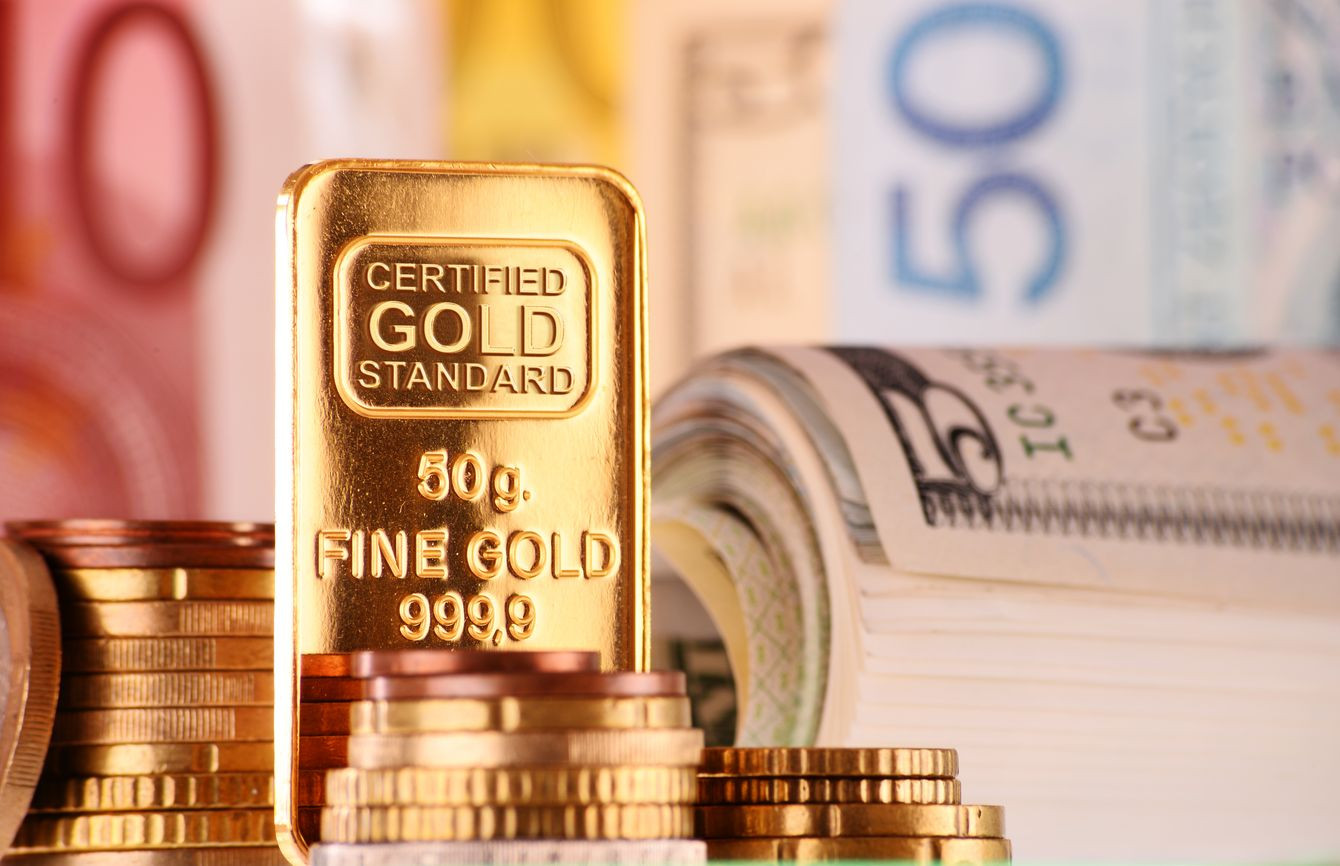
New potential risks
The fall in gold prices suggests the market may be betting on a easing of geopolitical tensions in Ukraine, although according to StoneX expert Rhona O'Connell, "the gold market is no longer strongly influenced by geopolitical developments in the region".
O'Connell said that gold prices have fluctuated in a narrow range, only 2% in the past week and 8% in the past three months, indicating a lack of strong stimulus factors. The fact that gold prices broke through the important technical support level of the 100-day moving average (SMA) on the morning of August 19, to the lowest level since the beginning of the month, is a warning signal of the possibility of a transition from support to resistance, which could put downward pressure on prices in the short term.
However, O'Connell also noted that gold still has potential demand. "Although central bank demand for gold has slowed, they continue to buy, sending a signal that global risks remain present," he said.
This was evidenced by data from Borsa Istanbul, which recorded Türkiye's gold imports falling to their lowest level since April 2023, but silver transactions rose 4%, suggesting investors are shifting to other precious metals as gold prices remain high.
The focus of gold investors today is the Jackson Hole meeting and the Federal Reserve's policy. The Jackson Hole Economic Conference, which takes place from August 21 to 23, will feature Fed Chairman Jerome Powell's keynote speech on Friday. Expectations of a Fed rate cut on September 17 have already been factored into gold prices, making the market less sensitive.
“The reaction of gold prices to the Fed’s moves is fading, suggesting that the market may be saturated,” O’Connell said. He forecasts an average gold price of $3,320 an ounce in the third quarter, but could fall to $3,000 an ounce in the fourth quarter, barring an unexpected event such as a humanitarian crisis or “black swan.”
However, many experts remain optimistic about gold's long-term prospects. Analyst Jim Rickards said: "The Fed's interest rate cut cycle, expected to start in September, will weaken the US dollar, creating conditions for gold to increase."
He said gold could hit $3,500 an ounce by year-end if the Fed maintains its easy monetary policy path. However, he also warned that any volatility in the stock market, which is considered “overheated,” could temporarily drag down gold prices before recovering as a safe-haven asset.
Data from Borsa Istanbul shows a trend of falling gold purchases due to high prices, with Türkiye’s gold imports falling 53.5% month-on-month in July 2025. However, central banks have maintained their strategy of accumulating gold when prices fall, seeing this as an opportunity to increase reserves.
“Countries like Türkiye, India and China are not going to stop buying gold, they are just waiting for lower prices,” Rickards said, reinforcing gold’s role as a strategic asset amid global economic uncertainty.
In the short term, gold prices could remain under pressure if the Russia-Ukraine summit goes smoothly and geopolitical tensions ease. However, sensitive issues such as territorial disputes remain a major risk that could disrupt the peace process and push gold prices back up. Additionally, if Powell’s speech at Jackson Hole fails to provide a clear signal on the path of interest rates, gold could continue to fluctuate in a narrow range.
In the long term, gold is still considered a safe investment channel thanks to the Fed's interest rate cutting cycle and sustainable demand from central banks. However, investors are always cautious about the possibility of a stock market crash or unexpected economic fluctuations, which could put temporary downward pressure on gold before the metal recovers.
Domestically, gold prices are still at a historic high. SJC gold bars are sold at 125 million VND/tael. Gold rings cost around 120 million VND. The USD/VND exchange rate on the banking market has reached a historic high of 26,470 VND to 1 USD.

Source: https://vietnamnet.vn/gia-vang-suy-yeu-sau-cuoc-gap-lich-su-tiem-an-rui-ro-moi-2433563.html



![[Photo] Prime Minister Pham Minh Chinh chairs the conference to review the 2024-2025 school year and deploy tasks for the 2025-2026 school year.](https://vphoto.vietnam.vn/thumb/1200x675/vietnam/resource/IMAGE/2025/8/22/2ca5ed79ce6a46a1ac7706a42cefafae)




![[Photo] President Luong Cuong receives delegation of the Youth Committee of the Liberal Democratic Party of Japan](https://vphoto.vietnam.vn/thumb/1200x675/vietnam/resource/IMAGE/2025/8/22/2632d7f5cf4f4a8e90ce5f5e1989194a)
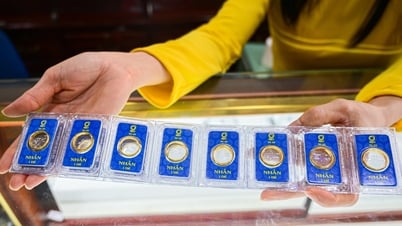
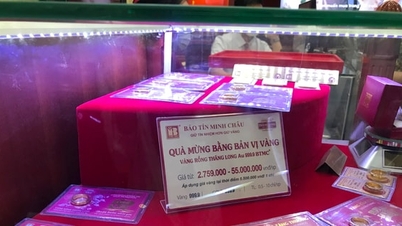



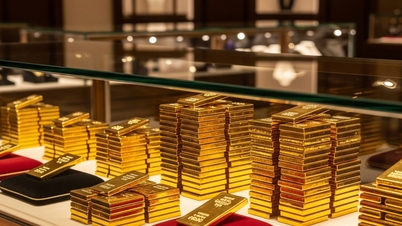


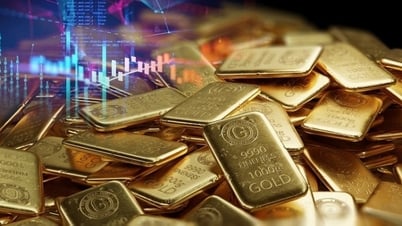






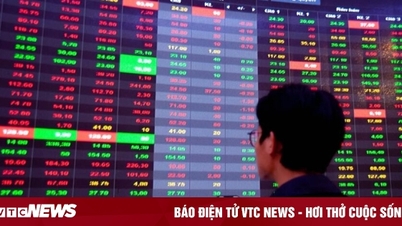

















































































Comment (0)